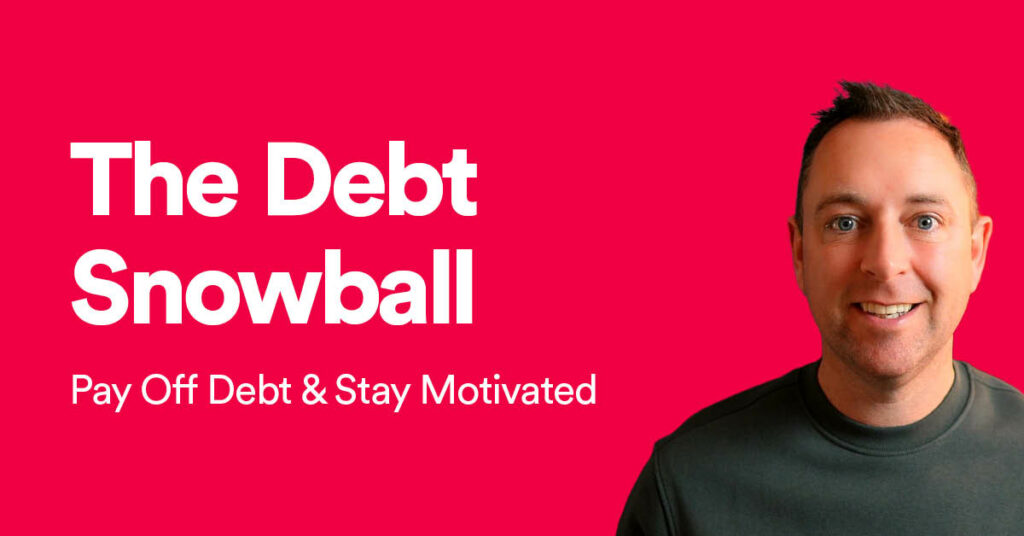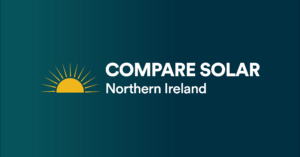You might have heard of debts snowballing out of control, and this happens for many reasons. But by using the debt snowball method, you can use this strategy to pay down your debts and stay motivated throughout the process of doing so.
The debt snowball method is one of the most popular debt repayment strategies that many people use to pay down and get rid of their debt.
The snowball strategy focuses on paying down those debts with the lowest amount to be repaid first, then moving on to the next debt and so on until all debts are paid off in full.
While the debt snowball method is an incredibly popular method of paying down debt, it is not the most efficient and the debt avalanche method does allow you to pay down your debt faster and ultimately with less cost to you.
However, by paying down your debts and checking them off as you no longer owe them, the momentum of your debt repayment build and this is seen to act as a huge motivator.
How does the debt snowball method work?
When you start working to pay down your debt using the debt snowball method, you start by paying down the debt with the lowest amount of debt left to pay. You must continue to make the minimum payment contributions on your other debts during the debt snowball strategy.
Once you clear the smallest debt fully, any money you were using to pay down the first debt is then layered onto the contributions you were making to the next smallest debt. The process repeats itself until all your debts are paid off in full.
This debt repayment strategy gets its “snowball” name from the effect a snowball makes as it gathers momentum rolling down a hill. With each debt you repay, you are speeding up the repayment of the next.
Debt repayment doesn’t happen overnight and it’s hoped that by using the debt snowball method, those paying down their debt will not only maintain motivation but have this snowball also to boost focus and drive to do so.
No matter if you’re building wealth, building a business or paying down debt, always celebrate the small wins you make. These often serve as a huge motivation to achieve your goals no matter what they are.
How to start using the debt snowball strategy
If you’re on the journey towards paying down debt I am rooting for you. I have spoken to many personal financial coaching clients who are doing just the same and they each have told me that the stress of debt is often a huge percentage of the stress in their life. I can also tell you that those who’ve paid down their debt, feel a huge sense of relief and achievement when they finally pay down their debt.
If you’re planning to use the debt snowball method to pay down your debt, these are the five steps to get you on the right path.
- On a piece of paper or in a spreadsheet, list all your debts.
- Order these starting with the debt with the smallest outstanding balance and ending with the debt with the largest.
- Tackle the smallest debt first. Use any additional money in your budget to pay this down as quickly as possible. Maintain paying the minimum monthly amount to your other loans. Paying down the first loan should be “additional money + minimum monthly payment”. So if your minimum payment amount is £100 and you have found £150 in your budget to put towards the debt, you initially pay £250 to the smallest debt.
- Look for opportunities to increase your income and put this money towards repaying your debts.
- When you have paid the first loan off, any money you were using to pay the first debt should be added to the minimum monthly amount of the second debt. If your minimum monthly repayment on the second debt is £150, you would now be putting £400 into this until it is paid in full. This is the snowball gathering momentum. Repeat this process until you have paid off all your debts.
Debt snowball example
Below is an example of how a debt snowball might look for a normal family in the UK. In the table below we’ve shown 4 different debts alongside the balance, the APR (Interest rate on the debt) and the monthly minimum payment.
| Debt | Balance | APR | Monthly minimum |
| Credit Card | £10,000 | 21% | £300 |
| Personal Loan – Home Improvements | £4,000 | 17.99% | £120 |
| Student Loan | £8,000 | 6.25% | £200 |
| Car Loan | £6,000 | 4.99% | £149 |
Unlike the debt avalanche, we ignore the APRs when using a debt snowball strategy. Looking at the debts, we plan to repay them based on the debt with the lowest balance left to pay. In this instance, the Personal Loan – Home Improvements would be the first loan we focus on. Then the car loan, followed by the Student Loan and finally the Credit Card debt.
Taking the Personal Loan first, you would pay the £120 monthly minimum and any further money you can spare in your budget. Let’s say £150. Therefore each month you’d pay £270 towards the personal loan until this debt is repaid. Meanwhile, you continue to pay the monthly minimums on the other debts.
At this rate, it would take you 15 months to pay back the personal loan. If you’re in debt look extensively at your budget and I’ll be honest with you, I’d cut back any unnecessary spending where possible until I was debt free. Let’s say after reviewing your budget, you were able to find £600 per month to pay down your debt. You’d have the personal loan paid off in 7 months.
Then when the personal loan is paid off you focus your attention on paying down the car loan. Using the £600 a month that you were paying down the first debt with, and adding on the monthly minimum for the car loan, you’d now be paying £749 a month towards it.
With the snowball method, you gather momentum with every debt paid off in full.
What debts are included in a debt snowball strategy?
I’m here to tell you that being in debt isn’t normal.
Being in debt has been normalised by society. And yes the world is conspiring to put you further in debt. Never in the history of time has debt been more readily available and accessible.
- Personal loans,
- buy now pay later shopping,
- student loans,
- payday loans,
- car loans or car “deals”.
- Pretty much any loan can be included in your debt snowball repayments.
There is some debate about whether mortgages should be included. However as mortgages are generally a huge percentage of the debt a household owes and are secured against an asset (the property), I generally don’t include a mortgage in a debt snowball strategy.
However many of my clients do start to pay down their mortgage aggressively after paying down their debt using the money they were previously using for this purpose.
The choice to do this is entirely a personal one and equally, you may choose to start investing for your own financial goals.
Advantages of the debt snowball method
The main benefit of the snowball method is that by paying off the debts starting with the smallest amount, you see more frequent wins that can and should be celebrated.
Checking off debts is a huge motivator for those paying down debt. And when you no longer have these debts to repay, it can motivate you to continue.
Disadvantages of the debt snowball method
Many people I’ve spoken to just “want rid” of their debts asap. While the debt snowball method does allow you to knock off the debts starting with the smallest you owe first, it isn’t the most efficient way to do so.
By paying down the higher-interest debts first, you can pay less interest and also reduce the time taken to repay all your debts.
In exchange for the motivational aspect of checking off debts that are repaid, this could be costing you more money and time.
Check out the debt snowball method vs the debt avalanche method article for a breakdown of each of these in much more detail.
Ways to accelerate your debt snowball
By focusing on your current budget and finding ways to decrease the amount of money you spend each month, you can put any savings towards your debt.
If you’ve never created a budget before check out our 50/30/20 budgeting guide which is an incredibly popular method of managing your finances. If you want to be more aggressive in your debt repayment, increase the savings rate percentage.
Here at Foundered, we’re incredibly pro-business and we believe that the quickest way to build wealth or to help pay down debt is to earn more money. Starting a side hustle or getting a second job to increase your income is a great way to supercharge your debt repayments.
Creating an emergency fund might seem counterintuitive when you’re paying down debt. However, the worst case scenario when you are in debt, is having to take out further loans to pay for emergencies. By establishing a modest emergency fund of say £1000, you are protecting yourself from the worst-case scenarios while you pay down the remaining debt balances.
Alternatives to the debt snowball method
The debt snowball method is one of the most popular debt repayment strategies and it was popularised in America by Dave Ramsey, an American personal finance personality. While it is popular, it may not be suitable for everyone.
Instead many choose the debt avalanche method to repay their debts. Rather than paying down the debts with the lowest balance, the debt avalanche method focuses on paying down the most expensive debts (the debts with the highest interest rate APR) first. By doing so, it is hoped that the most efficient path to repaying the debts is found.
Using our example above, instead of paying down the personal loan with the 17.99% APR, the larger credit card balance with the 21% APR would be the primary focus of your debt repayment. Then the personal loan, the student loan and the car loan, until no further debts remain.
Much like the snowball method, each time you clear a debt, the money that was being attributed to that debt from your budget is layered on top of the next debt minimum repayment amount to compound the debt repayment.
Those who know about compound interest earn it, those who don’t pay it!
Debt snowball roundup
If you’re considering paying down your debt or you are in the process of doing so, I’m rooting for you. It’s not easy and there will be days you feel like giving up. Don’t! Instead follow my Instagram page or my Foundered Money YouTube channel, as I post daily motivational and educational tips to keep you on the right track!
Let’s be clear, the best debt repayment strategy will always be the one you stick to because the debt snowball strategy provides regular feedback and motivation as each debt becomes repaid. This consistent reinforcement is beneficial for many and because of this, the debt snowball method continues to be popular.
However, for those with large debts or who want to pay down their debt efficiently, the alternative debt avalanche method may be a better option. Provided you can stay the course throughout the process.


